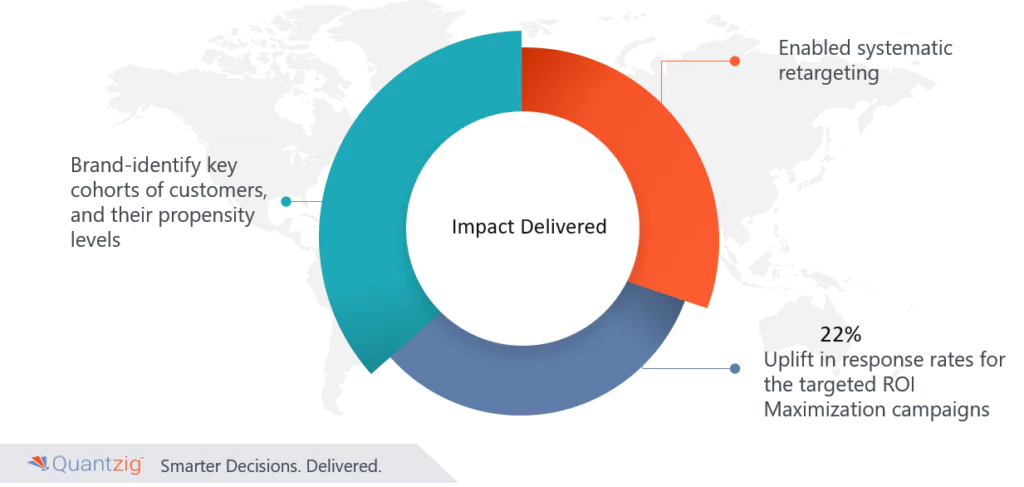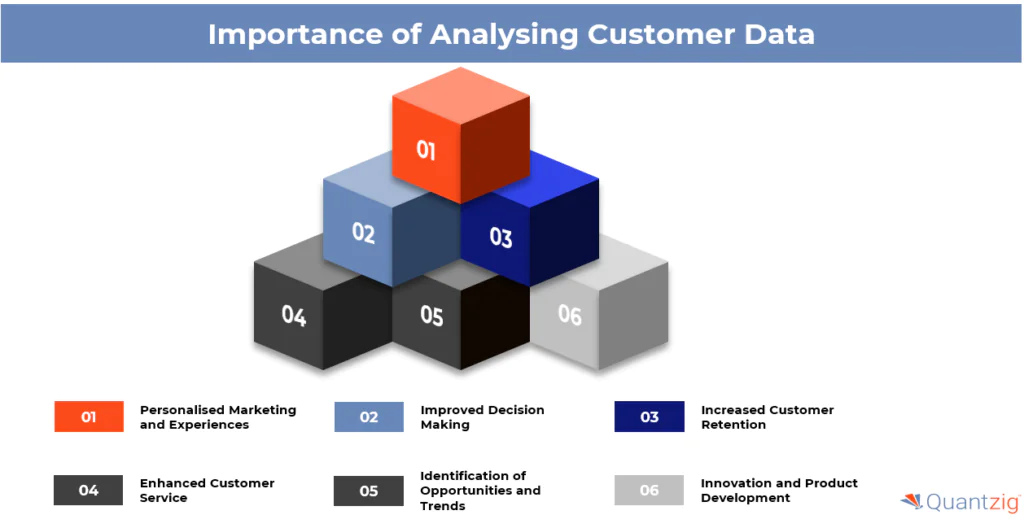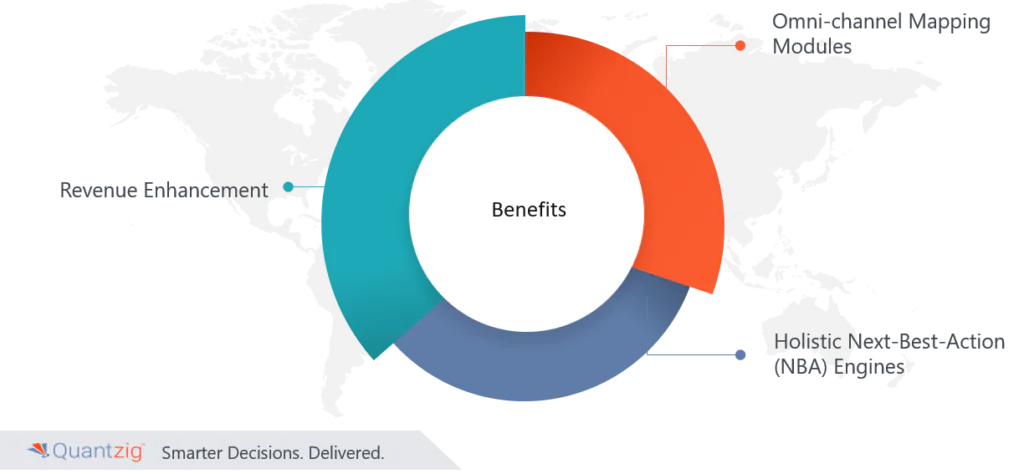Written By: Sudeshna Ghosh
In today’s era of data-informed decision-making, the landscape of customer analytics is undergoing a profound transformation, fueled by advancements in technology. Artificial intelligence, machine learning, big data processing, and predictive models serve not merely as tools but as driving forces reshaping the future of client insights. This discourse delves into the profound impact of technology on analytic trends, exploring cutting-edge insights that redefine how businesses comprehend, engage with, and gratify their customers. As we journey through the digital age, it becomes imperative to grasp how technological innovations revolutionize data utilization, Social media interactions, empowering companies to craft unparalleled client experiences and cultivate growth. Amidst this evolution, it’s vital to leverage insights derived from customer experiences (CX), product experiences (PX), and user satisfaction to navigate multi-channel interactions effectively. Real-time customer insights, facilitated by natural language processing tools and cloud-based services, offer invaluable guidance in understanding customer journeys, customer profiles, and behaviors. In this dynamic landscape, businesses must also embrace growth insights, user experiences, and self-service analytics tools to stay ahead of customer analytics trends and optimize business interactions for enhanced product analytics data and customer behavior analysis.
Quantzig, an advanced analytics and business intelligence solution providers, offers a comprehensive solution for businesses seeking to understand and engage with their customer base effectively. From segmentation analysis to predictive modeling, our platform provides actionable insights that drive personalized marketing strategies, enhance customer satisfaction, and optimize business performance.
Book a demo to experience the meaningful insights we derive from data through our customer analytics tools and platform capabilities. Schedule a demo today!
Request a Free DemoTable of Contents
Customer Analytics Trends and Insights: A Quantzig Case Study
| Section | Details |
|---|---|
| Client Details | Leading e-commerce company located in Europe. |
| Challenges | Lacked robust data management, leading to inconsistent and incomplete customer data, hampering personalized strategies. Deficient access to organized data hindered personalized marketing and engagement initiatives, limiting retention and growth. Struggled to identify potential repeat customers due to lack of a structured approach, resulting in missed opportunities to nurture valuable clients. |
| Solutions Offered | Established a core repository combining various data types for profound insights. Agile adjustments based on up-to-the-minute data to adapt to changing behaviors and preferences. Scalable and flexible handling of diverse data sources and multi-channel insights. Tailored engagement strategies based on customer profiles and journeys for enhanced customer satisfaction. Tailored strategies for inner and outer loop client journey to optimize engagement and conversion rates. |
| Impact Delivered | Enabled the client to identify key customer cohorts for systematic retargeting. Campaigns showed a 22% increase in response rates for targeted ROI maximization campaigns. |
Client Details:
A leading e-commerce company located in Europe.
The challenges faced by the Client:
The client was confronted with several critical challenges in their customer data management and personalized strategy implementation:
1. Inadequate Data Management:
The absence of a robust data management infrastructure impeded their capacity to efficiently organize, store, and retrieve customer data. Inconsistencies or deficiencies in data completeness posed the risk of erroneous user profiles and hindered the development of personalized strategies.
2. Insufficient Personalization:
Due to deficient access to well-organized data, the client encountered difficulties in crafting personalized and contextually relevant strategies. The challenge of tailoring marketing and engagement initiatives to individual preferences and behaviors was pronounced, thereby limiting the effectiveness of retention and growth efforts. Implementing a no-code product growth platform enabled them to address friction points more effectively, while live chat and customer service interactions provided real-time support. Insights from an activity level analysis and stats from a head-to-head A/B test guided decisions, while the resource center offered additional information and Activity level Feature. In-app messages featuring new features further enhanced user engagement.
3. Identification of Repeat Customers:
The e-commerce team of the client was in dire need of a solution that could precisely identify transactions indicative of potential repeat customers. Lacking a structured approach, they resorted to guesswork instead of leveraging actionable insights, resulting in missed opportunities to nurture and retain valuable clientele. To address this challenge, the implementation of no-code growth tools and the involvement of non-technical roles became imperative. By incorporating variants and lead optimization pages, checklists, tooltips, and other UI elements, the team aimed to enhance customer delight and foster loyalty. Additionally, algorithms were employed to analyze data from various data sources and channels, producing actionable results. The integration of holistic Next-Best-Action (NBA) Engines and omni-channel Mapping Modules facilitated goal-based tracking and user behavior tracking, enabling the team to tailor personalized marketing campaigns effectively. Furthermore, measures such as server protection and encryption were implemented to safeguard data integrity and enhance customer trust.
In summary, the client’s challenges underscored the critical necessity of streamlined data management frameworks to bolster product experience (PX), guide customer experience (CX), and cultivate user satisfaction. The demand for optimized processes extends beyond these aspects to encompass multi-channel insights, social media interactions, and comprehensive understanding of customer journeys and customer profiles. Moreover, the imperative for real-time customer insights and the utilization of advanced tools such as natural language processing tools within cloud-based services further underlines the significance of addressing these challenges.
By addressing these complexities, businesses can harness growth insights and refine user experience through self-service analytics tools. Additionally, leveraging product analytics data and staying attuned to evolving customer analytics trends, such as those monitored through Brandwatch and Userpilot, become paramount. Embracing dynamic business interactions and understanding customer behavior, with insights gleaned from timed surveys and Hotjar’s Ask tools, serve as cornerstones for guiding strategic decision-making, fostering empathy, brand loyalty, and ultimately, achieving sustained success in today’s competitive landscape. Teams and departments equipped with proper training can utilize session recordings and heatmaps to gain contextual understanding, optimize competitive edge, and gather zero-party data. Cloud analytics solutions such as Microsoft Azure, Amazon Web Services, and Google Cloud Analytics further enhance these efforts, enabling businesses like JD Rico to unlock the full potential of their data and propel their growth strategies forward by making Interactive guides from Session recordings. Third-party cookies and PMF insights play crucial roles in refining user journeys and improving overall customer satisfaction.
Solutions offered by Quantzig:
The journey commenced with the establishment of a robust Customer 360 Datamart, amalgamating an array of data categories, encompassing customer journey activity, demographics, transactions, channels, and behaviors. This Datamart laid the groundwork as the core repository for profound insights. Following this, we meticulously scrutinized all potential attributes capable of influencing purchasing behavior, fostering a nuanced comprehension of user dynamics.
Utilizing advanced methodologies aligned with contemporary trends in business analytics, we pinpointed customers exhibiting heightened propensities for specific behaviors, unraveling the pivotal attributes underpinning these inclinations. This meticulous analysis of consumer trends played a pivotal role in unveiling the critical factors shaping the decisions and preferences of the target audience.
Moreover, our approach integrated Real-time customer insights, allowing for dynamic adjustments based on up-to-the-minute data. This agile strategy, coupled with the utilization of a sophisticated Natural language processing tool, facilitated swift adaptation to changing customer behaviors and preferences.
Our reliance on Cloud-based services ensured scalability and flexibility in handling diverse data sources and analytics processes. This cloud infrastructure supported the seamless integration of Multi-channel insights, enabling comprehensive analysis across various touchpoints, including social media interactions and other digital platforms.
Furthermore, our focus on Customer profiles and Customer journeys allowed for personalized engagement strategies tailored to individual preferences and behaviors. By delving into customer behavior patterns, we uncovered valuable insights into purchasing habits and decision-making processes.
In essence, our approach encapsulated the essence of Customer experience (CX) and User experience (UX), prioritizing User satisfaction through Social media interactions, Customer profiles, and User experience. Leveraging self-service analytics tools empowered our clients to delve into product analytics data, Product experience (PX), and Cloud-based services independently, gaining deeper insights into market trends and consumer preferences.
Through our commitment to staying abreast of the latest customer analytics trends and delivering actionable Growth Insights, we facilitated informed decision-making and strategic planning. Ultimately, our focus on fostering meaningful business interactions and cultivating enduring relationships underscored our dedication to driving success in the ever-evolving landscape of customer analytics.
In response to these discernments, tailored activation strategies were formulated for both the inner loop (website) and outer loop (campaigns) of the entire client journey. These strategic frameworks aimed to harness the insights acquired to enrich engagement, personalization, and conversion rates at each touchpoint. Consequently, we not only optimized the consumer experience but also maximized the efficacy of marketing endeavors, thereby driving revenue growth and fostering enduring relationships.
Experience the advantages firsthand by testing a customized complimentary pilot designed to address your specific customer analytics requirements. Pilot studies are non-committal in nature.
Request a Free PilotImpact Delivered:

- We helped them brand-identify key cohorts of customers, and their propensity levels and enabled systematic retargeting.
- Campaign performances showed a 22% uplift in response rates for the targeted ROI Maximization campaigns.
Why should you analyze customer data?
Analyzing customer data is important for businesses for several reasons. Some of them are as listed below:

- Personalized Marketing and Experiences: Understanding customer preferences and behaviors allows businesses to tailor their marketing strategies and product offerings to meet individual needs. This leads to more effective marketing campaigns and improved customer satisfaction.
- Improved Decision-Making: Customer data provides insights into purchasing patterns, preferences, and trends. This information can guide strategic business decisions, such as product development, pricing strategies, and resource allocation.
- Increased Customer Retention: By analyzing customer data, businesses can identify patterns that lead to customer satisfaction and retention. This can help them proactively address customer issues and enhance loyalty.
- Enhanced Customer Service: Understanding customers’ history and preferences enables businesses to provide personalized and efficient customer service. This leads to better customer experiences and can strengthen brand reputation.
- Identification of Opportunities and Trends: Analyzing customer data can reveal emerging market trends, potential opportunities, and areas for growth. Businesses can use this information to stay ahead of competitors and capitalize on new opportunities.
- Innovation and Product Development: Customer data can reveal unmet needs and preferences, providing inspiration for new products or services. This can help businesses innovate and stay competitive in the market.
In summary, analyzing customer data is crucial for businesses to understand their audience, optimize operations, and drive sustainable growth through informed decision-making and strategic planning.
Significance of Using Customer Data Analytics Tool:
In today’s competitive landscape, achieving business excellence relies heavily on unified data management and decision support systems, which serve as the foundation for user-centric operations. These systems excel in personalization and delivering timely responses, crucial aspects of the modern journey towards success.
By integrating and streamlining data from various customer touchpoints, these systems offer a comprehensive view of customer interactions and preferences. This deep understanding empowers businesses to tailor personalized actions precisely when they matter most, ensuring a seamless and satisfying customer journey. Moreover, these systems facilitate informed decision-making by harnessing advanced tools such as CRM, predictive analytics, and prescriptive customer analytics. Through AI chatbots and machine learning, actionable insights are extracted from the amassed data, allowing organizations to anticipate customer needs, spot trends, and optimize strategies accordingly.
Modern toolkits and platforms, often cloud-based and scalable, are instrumental in accelerating system implementation and addressing evolving market demands. They provide the agility and flexibility necessary to swiftly adapt to changing customer behaviors, preferences, and bases. Ultimately, this amalgamation of advanced technology tools forms the cornerstone for businesses aiming to prioritize customer-centric experiences. By leveraging these tools effectively, organizations not only meet but surpass customer expectations, fostering loyalty, and driving sustainable growth.
Quantzig, a platform of analytical services, spearheads the evolution of analytic trends with cutting-edge technological solutions. From leveraging big data to harnessing artificial intelligence, our experts empowers businesses to unlock unparalleled insights, drive informed decisions, and stay ahead in the dynamic landscape of analytic services.
Importance of Analyzing Customer Data:
1. Enhanced Customer Satisfaction:
Analyzing customer data empowers businesses to understand their customers’ preferences, behaviors, and pain points. By utilizing insights gained from customer journey analytics, businesses can tailor their products, services, and interactions to meet individual needs effectively. This personalized approach fosters higher levels of customer satisfaction, as customers feel understood and valued. Moreover, businesses can proactively address issues and provide solutions, ultimately enhancing overall satisfaction levels and fostering long-term loyalty.
2. Strategic Decision-Making:
Informed decisions based on thorough analysis of customer data lead to more effective strategies and initiatives. By leveraging customer analytics, businesses can identify trends, patterns, and opportunities in their target market. This enables them to make data-driven decisions regarding product improvement and development, personalized marketing campaigns, pricing strategies, and customer service enhancements. Consequently, businesses can allocate resources more efficiently, optimize their operations, and stay ahead of competitors in a rapidly evolving market landscape.
3. Personalized Experiences:
Personalization is key to building strong customer relationships and driving engagement. Through comprehensive customer data analysis, businesses can create highly personalized experiences across various touchpoints. By segmenting audience based on their preferences, behaviors, and demographics, businesses can deliver targeted content, recommendations, and promotions. This not only increases customer engagement but also fosters a deeper sense of connection and loyalty. Moreover, personalized experiences contribute to higher conversion rates and increased customer lifetime value, driving sustainable business growth.
4. Goal-Based Tracking:
Customer data analysis enables businesses to set and track meaningful metrics and KPIs aligned with their strategic objectives. Goal-based tracking, event tracking, and feature tagging in customer analytics provide businesses with invaluable insights into customer behavior, preferences, and interactions, enabling data-driven decision-making and strategic optimization. By establishing clear goals, such as increasing customer retention or improving conversion rates, businesses can measure their performance accurately. Through regular monitoring and analysis of customer data, businesses can assess progress towards these goals, identify areas for improvement, and adjust strategies accordingly. This iterative process ensures that businesses stay focused on achieving desired outcomes and continuously drive towards success in a dynamic marketplace.
5. Real-Time Communication:
In today’s fast-paced digital world, real-time communication is essential for delivering timely and relevant messages to customers. By leveraging advanced data analytics tools, businesses can access and analyze customer data in real-time, allowing for immediate action and response. Whether it’s addressing customer inquiries, resolving issues, or capitalizing on emerging opportunities, real-time insights enable businesses to engage with customers in meaningful ways. This proactive approach not only enhances customer satisfaction but also strengthens brand reputation and fosters loyalty. Additionally, real-time communication facilitates agile decision-making, enabling businesses to stay agile and responsive in an ever-changing business environment.
Benefits of Implementing Customer Data Analytics:
Our cutting-edge solutions, part of Customer Analytics 3.0, are strategically designed to boost revenue by focusing on omnichannel users and cultivating high return-on-investment consumer behaviors. Here’s a breakdown of our approach:

1. Revenue Enhancement:
In the pursuit of revenue optimization, our solutions are crafted to finely tune and streamline revenue streams with an unwavering focus on omnichannel users. Through a methodical and detail-oriented approach, we identify and nurture behaviors that yield the highest returns, ensuring that each interaction with your brand is strategically tailored to maximize profitability. By leveraging advanced analytics and cutting-edge technologies, our solutions empower businesses to capitalize on every opportunity, driving sustained growth and unparalleled success in today’s competitive landscape.
2. Omni-channel Mapping Modules:
These modules act as data powerhouses, meticulously tracking and processing every consumer interaction across all channels. As consumers progress through the purchase journey, these modules continually generate increasingly valuable insights, enriching our understanding of their preferences and behavior. This information is crucial for personalized targeting and engagement.
3. Holistic Next-Best-Action (NBA) Engines:
At the heart of our strategy are the Holistic Next-Best-Action (NBA) engines, powered by cutting-edge AI modules. These engines are capable of real-time analysis trends of client behavior, purchase intent, and lifecycle stage. Leveraging this insight, they generate personalized marketing and content recommendations for each client. These recommendations are tailored to precisely meet their unique needs and preferences, resulting in a highly engaging and satisfying user experience.
4. Enhanced Decision-Making:
Implementing customer analytics offers businesses the invaluable advantage of making data-driven decisions. By harnessing insights derived from comprehensive analysis of customer behavior, preferences, and trends, organizations can gain a deeper understanding of their target audience. This enables leaders to make informed choices across various aspects of business operations, including product development, marketing strategies, and customer service initiatives. With access to actionable data, decision-makers can identify opportunities for growth, mitigate risks, and optimize resource allocation to align with customer demands effectively. Ultimately, this leads to more efficient and effective decision-making processes, fostering agility and competitiveness in today’s dynamic market landscape.
5.Improved Customer Experience:
Customer analytics facilitates the delivery of personalized and tailored experiences to individual customers, thereby enhancing overall satisfaction and loyalty. By leveraging insights gathered from data analysis, businesses can anticipate customer needs, preferences, and behavior patterns, enabling them to offer relevant and timely interactions across all touchpoints. From personalized product recommendations to targeted marketing campaigns and tailored customer service interactions, organizations can create a seamless and engaging experience that resonates with each customer on a personal level. As a result, customers feel valued, understood, and appreciated, leading to increased retention rates, higher customer lifetime value, and ultimately, sustainable business growth.
6. Enhanced Operational Efficiency:
Implementing customer data analytics empowers businesses to streamline operations and optimize decision-making processes. By leveraging integrated data sources and advanced analytics dashboards, both technical and non-technical roles gain access to actionable insights derived from large amounts of data. This democratization of data ensures that departments across the organization can make informed choices, backed by robust analytics. Moreover, through automation with customer analytics solutions, businesses can efficiently manage support requests, track customer behavior, and conduct A/B testing, leading to improved data sharing operational efficiency and precision in decision-making.
Quantzig’s Customer Analytics tools offer cutting-edge solutions designed to empower businesses with actionable insights derived from robust data sharing analysis. With advanced features and customizable functionalities, our tools enable organizations to gain a comprehensive automation understanding of their customer base, driving informed decision-making and facilitating the delivery of personalized experiences that foster long-term customer relationships and drive business growth.
Get started with your complimentary trial today and delve into our platform without any obligations. Explore our wide range of customized, data driven customer analytical solutions built across the analytical maturity levels.
Start your Free TrialChallenges Faced While Implementing this Technology

1. Challenges of incomplete data coverage:
In today’s enterprise landscape, customer data stands out as a significant and swiftly growing data ecosystem. This growth is primarily fueled by the widespread adoption of digital workflows and processes, resulting in a continuous flow of information. However, this wealth of data presents a fundamental challenge: the lack of a “perfect” or fully complete data coverage. The dynamic nature of data streams means that new sources are constantly emerging, perpetuating the absence of thorough and flawless data.
2. Business Dilemma:
This predicament presents a pressing business dilemma. On one hand, there’s an urgent need to kickstart analytic implementation, as valuable insights from customer analytics are crucial for staying competitive, include automation and delivering exceptional user experiences. On the other hand, in 2023, the ever-changing data landscape necessitates a thoughtful approach to customer analytics. To navigate this challenge effectively, organizations must adopt and institutionalize next-generation customer analytics solutions, leveraging tools such as predictive analytics and cloud-based analytics to stay ahead of the curve.
3. Data Integration and Quality Assurance:
Integrating various data sources, including event tracking, feature tagging, and real-time communication data, poses a significant challenge. Ensuring data accuracy, consistency, and completeness for informed decision-making, personalized experiences, and goal-based tracking requires rigorous quality assurance processes. Inadequate data quality can undermine customer satisfaction, loyalty initiatives, and the effectiveness of customer analytics efforts.
4. Scalability and Responsiveness:
As companies strive to deliver personalized experiences and real-time communication to enhance customer satisfaction and loyalty, scalability becomes critical. Scaling customer analytics capabilities to handle increasing data volumes while maintaining real-time responsiveness is a complex endeavor. Meeting the demand for timely insights and decision-making while effectively tracking goals and events presents a formidable challenge, especially in dynamic business environments where customer expectations continue to evolve rapidly.
5. Key Capabilities and Enablers:
Key capabilities in this context include the ability to adapt to evolving data streams, employ advanced techniques, organizational key performance indicators (KPIs), product experience (PX), and maintain data quality and security. Enablers encompass robust governance, agile platforms, and a data-driven culture. By addressing these capabilities and enablers, companies can harness the power of information while remaining agile and responsive to ongoing changes, thereby ensuring long-term success in business excellence.
Conclusion:
In conclusion, technology plays a pivotal role in shaping the landscape of customer analytics, driving trends and uncovering valuable insights for businesses. Leveraging innovative tools such as CRM, predictive analytics, and prescriptive customer analytics, alongside cloud-based analytics platforms, becomes essential in understanding consumer behavior and preferences, and crafting personalized customer-centric experiences. By harnessing the power of technology, organizations can gain a competitive edge, enhance customer experiences, and make informed decisions that drive growth and profitability. Embracing tech-driven approaches in customer analytics enables companies to navigate the customer analytics process effectively, from gathering customer feedback and protecting customer privacy to optimizing customer retention and implementing customer analytics strategies. This ensures they stay ahead of evolving market dynamics, adapt to changing customer personas, and maintain relevance in an increasingly competitive business environment.



